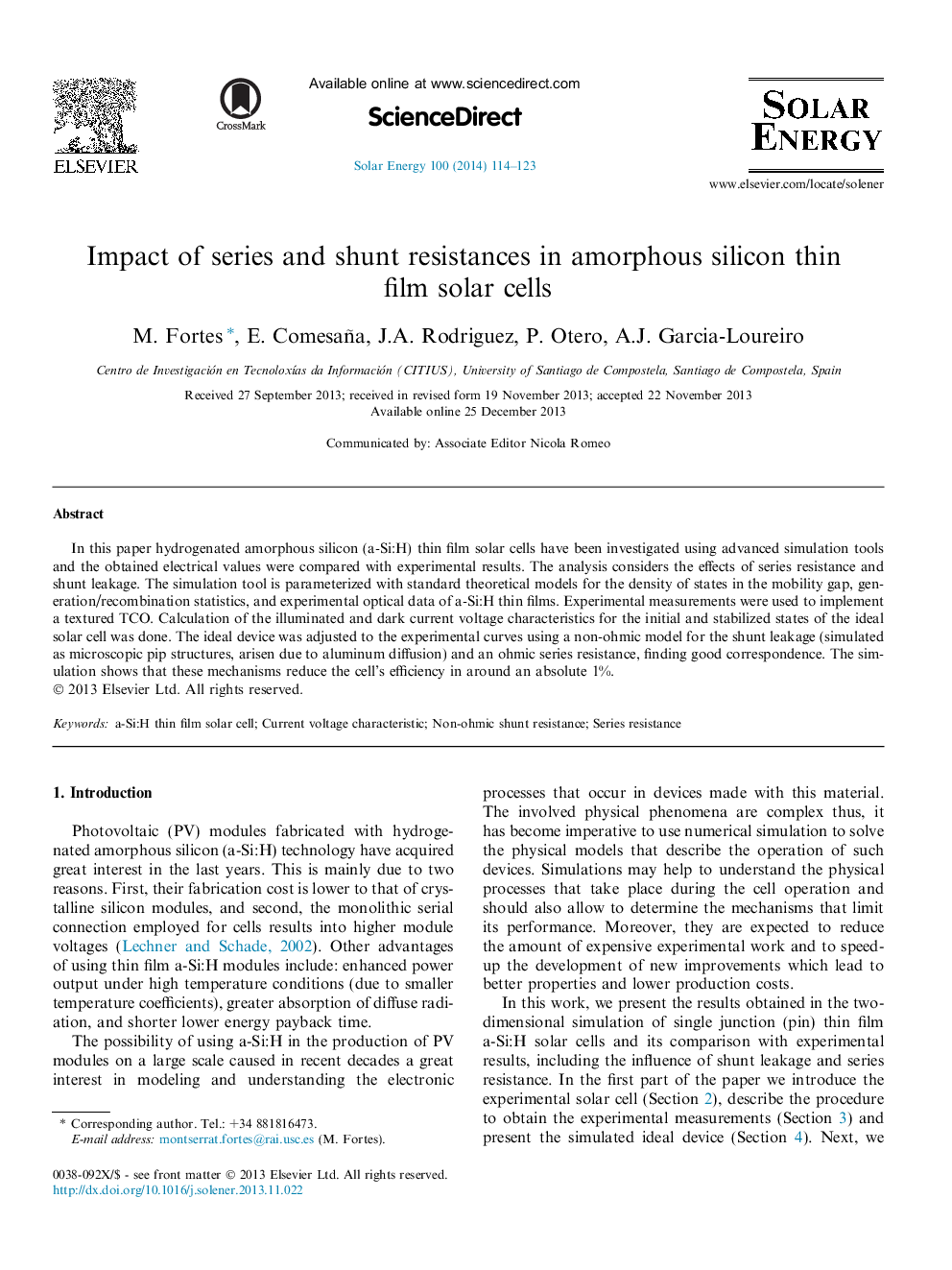| Article ID | Journal | Published Year | Pages | File Type |
|---|---|---|---|---|
| 1550112 | Solar Energy | 2014 | 10 Pages |
Abstract
In this paper hydrogenated amorphous silicon (a-Si:H) thin film solar cells have been investigated using advanced simulation tools and the obtained electrical values were compared with experimental results. The analysis considers the effects of series resistance and shunt leakage. The simulation tool is parameterized with standard theoretical models for the density of states in the mobility gap, generation/recombination statistics, and experimental optical data of a-Si:H thin films. Experimental measurements were used to implement a textured TCO. Calculation of the illuminated and dark current voltage characteristics for the initial and stabilized states of the ideal solar cell was done. The ideal device was adjusted to the experimental curves using a non-ohmic model for the shunt leakage (simulated as microscopic pip structures, arisen due to aluminum diffusion) and an ohmic series resistance, finding good correspondence. The simulation shows that these mechanisms reduce the cell's efficiency in around an absolute 1%.
Related Topics
Physical Sciences and Engineering
Energy
Renewable Energy, Sustainability and the Environment
Authors
M. Fortes, E. Comesaña, J.A. Rodriguez, P. Otero, A.J. Garcia-Loureiro,
